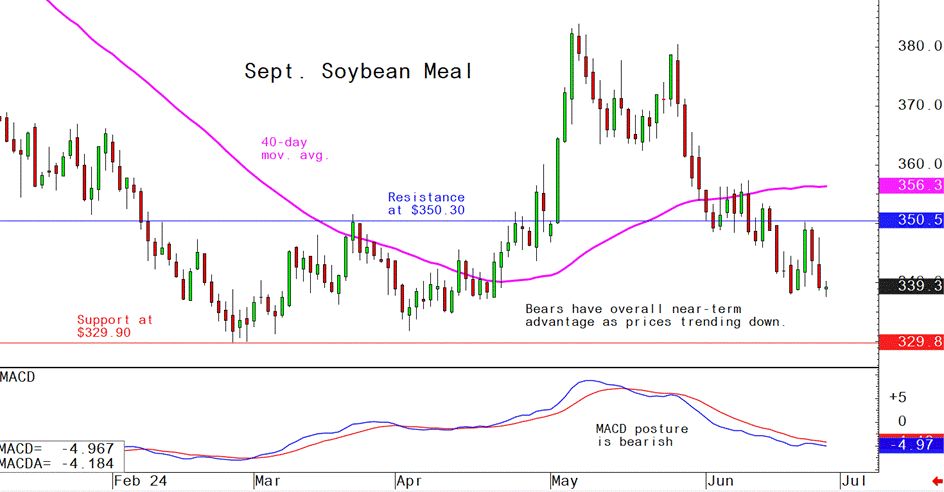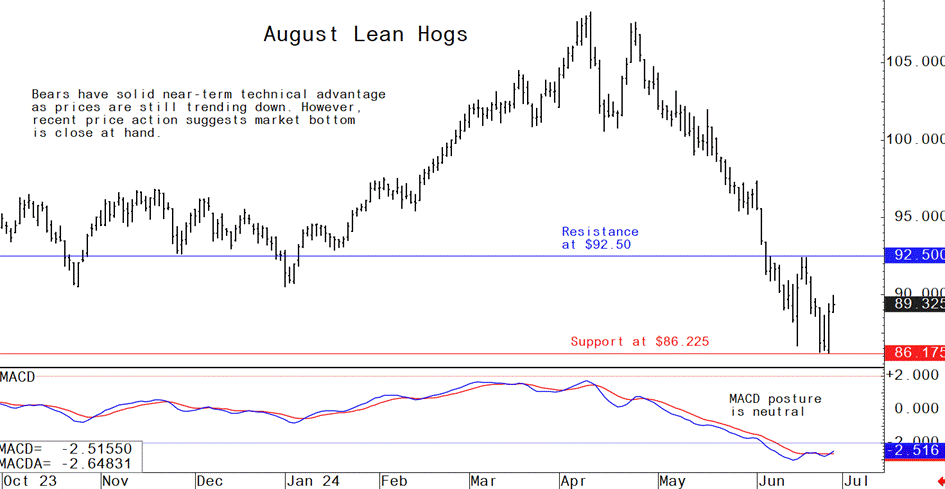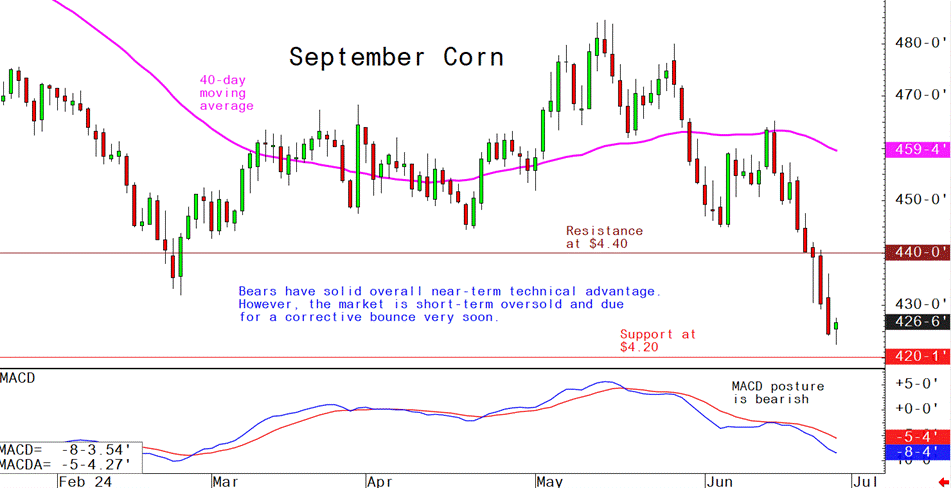



Pig outlook: Lean hog futures bears in firm control
Livestock analyst Jim Wyckoff reports on US Lean Hog futures and global swine newsThe lean hog futures market remains in a price downtrend on the daily bar chart. Cash market fundamentals are improving a bit this week. The latest CME lean hog index was up 7 cents to $89.92 as of June 25, while the pork cutout value firmed 21 cents to $95.52, potentially signaling a halt to the recent price declines. Cash fundamentals are exhibiting seasonal weakness following an usually early seasonal peak in prices. Pork product movement has been relatively light this week. That is likely due to grocers being finished with feature purchases for next week’s US Fourth of July holiday.
Slightly bigger US hog herd expected
Analysts expect USDA’s Hogs & Pigs Report this afternoon to show the U.S. hog herd increased 0.8% from year-ago as of June 1 to 74.139 million head. Market hog inventories are expected to be up 1.2%, while the breeding herd is anticipated to be down 2.7%. Analysts expect USDA to report a 0.9% bigger spring pig crop as increased litter size likely offset slightly fewer farrowings. Looking forward, analysts expect farmers to farrow 1.4% and 1.0% fewer sows during summer and fall, respectively. As always, USDA’s revisions to past data will be key.
Denmark is set to implement a carbon tax on livestock producers
This move is intended to meet its 2030 target of reducing greenhouse gas emissions by 70% from 1990 levels. The tax will be 300 Danish crowns ($43.16) per metric ton of carbon dioxide in 2030, increasing to 750 crowns by 2035. Farmers can receive a 60% income tax deduction, effectively reducing the tax to 120 crowns per metric ton initially, rising to 300 crowns by 2035. Subsidies will also be available to help farmers adjust their operations. This plan, proposed in February and agreed upon by farmers, industry, labor unions, and environmentalists, awaits parliamentary approval but is expected to pass. Farming is Denmark's largest source of carbon dioxide emissions. Other countries have faced resistance to similar taxes from farmers.
Weekly USDA US pork export sales
Pork: Net sales of 39,200 MT for 2024 were up 83 percent from the previous week and 25 percent from the prior 4-week average. Increases primarily for Mexico (20,200 MT, including decreases of 200 MT), Japan (5,900 MT, including decreases of 200 MT), Canada (4,200 MT, including decreases of 600 MT), South Korea (3,900 MT, including decreases of 100 MT), and Australia (3,100 MT, including decreases of 100 MT), were offset by reductions for the Dominican Republic (1,700 MT). Exports of 28,300 MT were down 2 percent from the previous week and 14 percent from the prior 4-week average. The destinations were primarily to Mexico (11,300 MT), Japan (4,100 MT), South Korea (2,700 MT), China (2,600 MT), and Canada (2,000 MT).
USDA Secretary Tom Vilsack is expected to announce a new livestock competition regulation
Vilsack will speak at an event that will focus on market competition and improving conditions for U.S. producers, featuring Vilsack and U.S. Assistant Attorney General of Antitrust Jonathan Kanter. The Office of Management and Budget recently completed its review of a USDA proposed rule defining unfair practices under the Packers and Stockyards Act. This is part of the Biden administration's broader regulatory efforts in agriculture, particularly targeting the livestock and poultry markets.
The next week’s likely high-low price trading ranges:
August lean hog futures--$86.225 to 92.50 and with a sideways bias
September soybean meal futures--$329.90 to $354.00, and with a sideways bias
September corn futures--$4.15 to $4.40 and a sideways-lower bias
Latest analytical daily charts lean hog, soybean meal and corn futures












